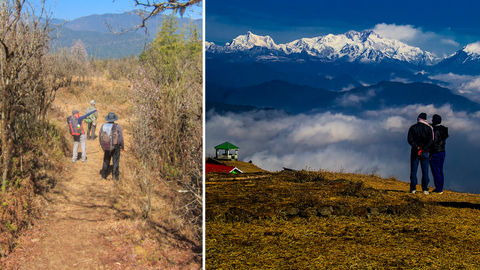
A trek to the highest peak in West Bengal, Sandakphu, rewards you with incredible views of Mount Everest and oodles of adventure. By Bindu Gopal Rao
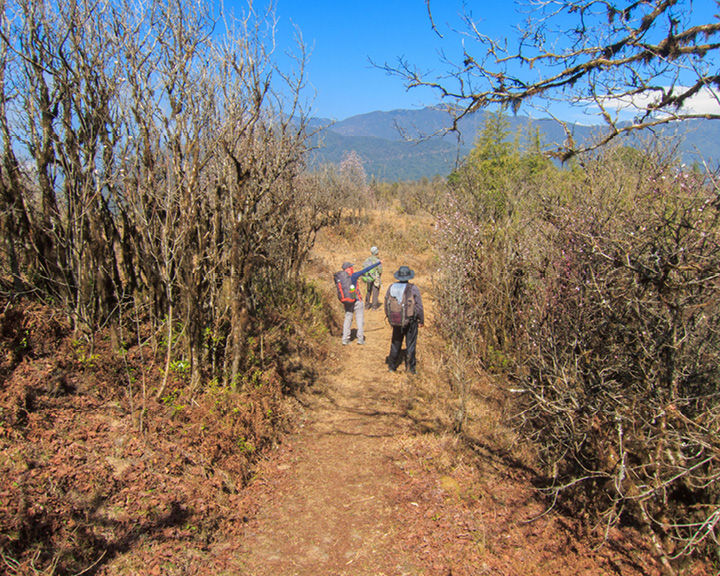
Where can you see Mount Everest, Kangchenjunga, Lhotse, and Makalu mountains in one sweeping perspective? The answer is Sandakphu in West Bengal. Bordering Nepal in the Eastern Himalayas, this is the place where you can see four of the highest mountains in the world at close quarters and in all their pristine beauty, while embarking on a trek amid natural vistas. A popular joke that runs among the locals here is that this is the place where you can have breakfast in India, lunch in Nepal, and dinner in China. Needless to say, Sandakphu promises a Himalayan adventure like no other.
The Hills Are Alive
“Hiking is a bit like life: The journey only requires you to put one foot in front of the other… again, and again, and again. And if you allow yourself the opportunity to be present throughout the entirety of the trek, you will witness beauty every step of the way, not just at the summit.” This anonymous quote is probably the best way to describe Sandakphu. Located in the Darjeeling district of West Bengal, it is the highest point of the Singalila Ridge on the West Bengal-Nepal Border. If you are a nature lover, there is little doubt that the Sandakphu trek, which takes about three days and is considered one of the easier treks to do, will appeal to you. The trek begins at an altitude of 2,286 metres and ascends to a staggering 3,636 metres at Sandakphu, taking you through several beautiful landscapes along the way. The word Sandakphu translates to ‘height of the poison plants’, after the poisonous aconite plants that grow here. You can recognise the plant from its small purple-blue flowers; its roots however, are used in medicine.
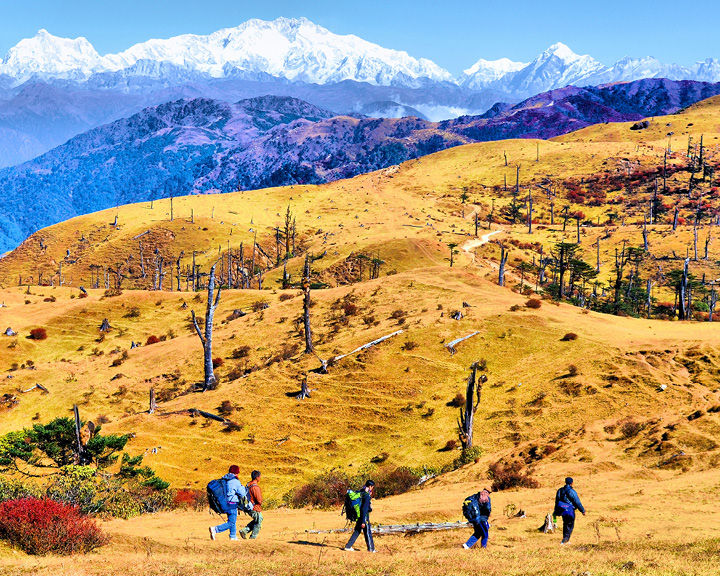
Nuances Of Nature
Sandakphu has something unique to offer in every season. For instance, during spring, the fiery rhododendrons are in full bloom and the whole place is bathed in hues of red, pink, and white. Giant magnolias and primula bloom alongside. This place has the highest concentration of orchids in a single geographical area in the world—a staggering 600 varieties! If you can bear the intense cold, winter will reward you with undulating snowscapes, frozen rivers, and waterfalls. Autumn is the best time to see the panoramic Himalayan ranges, courtesy of perfectly clear skies.
Trek Tales
The lure of Sandakphu is the fact that you can see a few of the world’s tallest peaks from here. These include the Kangchenjunga range (popularly referred to as the Sleeping Buddha), Lhotse, and Makalu, which are respectively the third, fourth, and the fifth-highest peaks in the world. Mount Kangchenjunga, Kumbhakarna, Kokthang, Simvo, Pandim, Tenzing Khang, Jubanu, Rathong, Frey, Kabru South, Narsing, and Kabru North complete the Sleeping Buddha. The crown jewel, of course, is Everest. The jaw-dropping beauty of the mountains will make you stop in your tracks. The peaks are visible from the first day of the trek at Upper Chitrey.
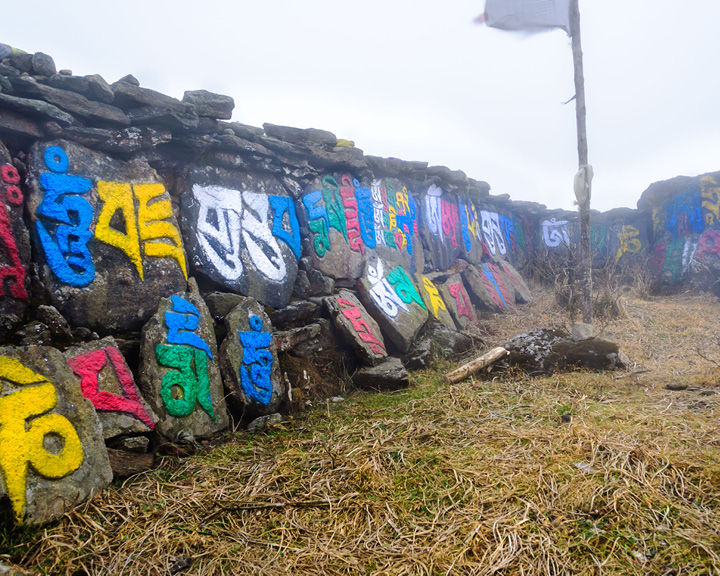
The Specifics
The Sandakphu trek starts from Manebhanjan, a quaint village near Darjeeling, and is considered a moderate trek in terms of difficulty. First-time trekkers with a basic level of fitness can attempt it. You can also start the trek at the sleepy settlement of Dhotrey, which cuts the overall trek distance by five kilometres. It is advisable to reach Manebhanjan one day prior and rest, to acclimatise yourself to the high altitude. Walking on rocky paths that take you through silver fir forests and rolling meadows, the trek gets steep in parts and there are chances that you will feel very tired in the first leg. If trekking is not your cup of tea, you can also hire a Land Rover at Manebhanjan and reach Sandakphu without a guide. However, if you do want to trek, you must plan the specifics. This includes arranging transport to Manebhanjan and roping in a state government-registered guide. This is mandatory, as you are not allowed to trek without a guide here. Guides charge Indians INR 1,000/USD 14 per day, for up to seven people in a group, and INR 150/USD 2 per additional person. The guide rate for foreign travellers is INR 1,200/ USD 17 per day for a group of up to seven people and INR 300/USD 4 per additional person. The route takes you through the scenic Singalila National Park, which is home to extensive rhododendron forests and offers breathtaking views of the eastern Himalayas.
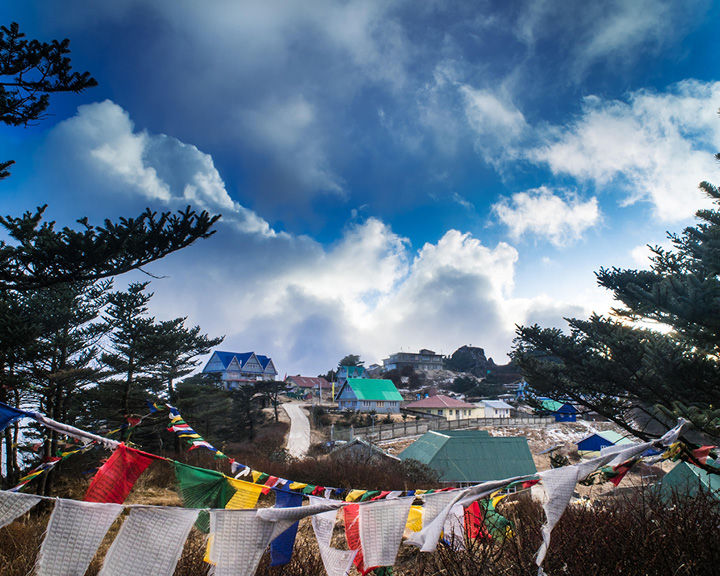
Scenic Routes
If you start your trek at Manebhanjan, your first stop will be the Singalila Wildlife Division, where you can obtain a trekking permit. Make sure you have proper trekking shoes as the road is riddled with gravel. The first leg that takes you to Chitre is a steep and uphill trek through pine, fir, and birch forests. Do stop by the Buddhist monastery at Chitre with the stunning Kangchenjunga range in the backdrop, and also visit the local restaurant here for refreshments. From Chitre, the trek is not as steep, and six kilometres later, you reach, Meghma, which also has a monastery that houses 108 idols of the Buddha. This is also the place where the trail forks—the route on the right takes you to Tonglu in India, while the left one takes you to Tumling in Nepal.
Tonglu is two kilometres from Meghma, while Tumling is four kilometres away, and both have accommodation options for the night. A kilometre-long trek from Tumling brings you to the entrance of the Singalila National Park—home to the rare red panda, pangolins, Himalayan black bear, clouded leopard, as well as several Himalayan birds. This is the place where your trek permits are checked. Remember the animals are shy and often camouflaged with their local environ. Keep your eyes peeled: the animals are reclusive but fabulous to encounter. From here, it is recommended that you take the scenic route through Jhaubari in Nepal and onward to Gairibas, which has several places for you to rest. Next, head to Kaiyakatta (two kilometres away) and then to Kalipokhri, three hours from Gairibas. It has a small black lake revered by the locals. The final six-kilometre long leg from Kalipokhri to Sandakphu is tricky as it is quite steep, but once you reach the top, the views will make you forget all about your sore muscles.
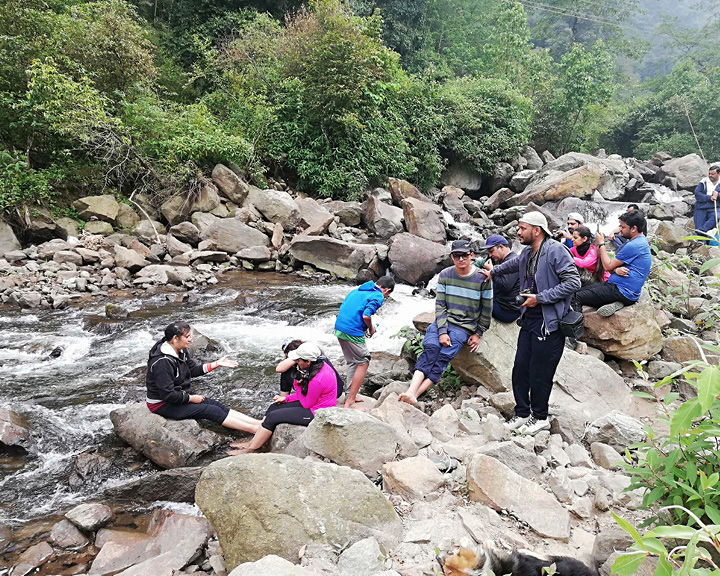
On your return, you can start at Sandakphu and reach Gurdum that is 10 kilometres away and has accommodation for the night. A 90-minute walk from Gurdum gets you to Srikhola, which has an eponymous river. You may stop here to catch your breath and take a dip before resuming. Visit the hanging bridge by the river for great photo ops. From Srikhola, a seven-kilometre uphill trek will bring you to Rimbik, the last major hamlet on the Bengal side. Alternatively, you can also return via Sabargram, Molley, Rammam, and Srikhola.
Nature’s Play
One of the best things about the trek is that it offers amazing views of sunrise and sunset from designated points. You can see the mountain range, cloaked in a golden hue during these hours. The natural sights of the region are best explored on the trek, as experienced guides point out each one that merits attention. One of the most compelling visuals are the vast thickets of rhododendron that cover long stretches of the paths. Shades of pink and red frame the snowcapped mountains and rolling meadows, making Sandakphu picture-perfect.

Good To Know
• Entry to Singalila National Park requires a permit that costs INR 200/ USD 3 for foreign nationals.
• After Tumling, almost all accommodation is solar-powered. Your phones and gadgets that need charging may incur an extra cost.
• Make sure you have enough warm clothes as Sandakphu can get very cold, especially in the winter. Do pack rainwear as weather can be unpredictable. If you are here in the winter, ensure you have snow hiking shoes.
• Carry personal hygiene essentials and basic medicines for fevers, colds, and coughs, as well as muscle relaxants.
• ATMs are not available on the way, and it is recommended to carry extra cash.
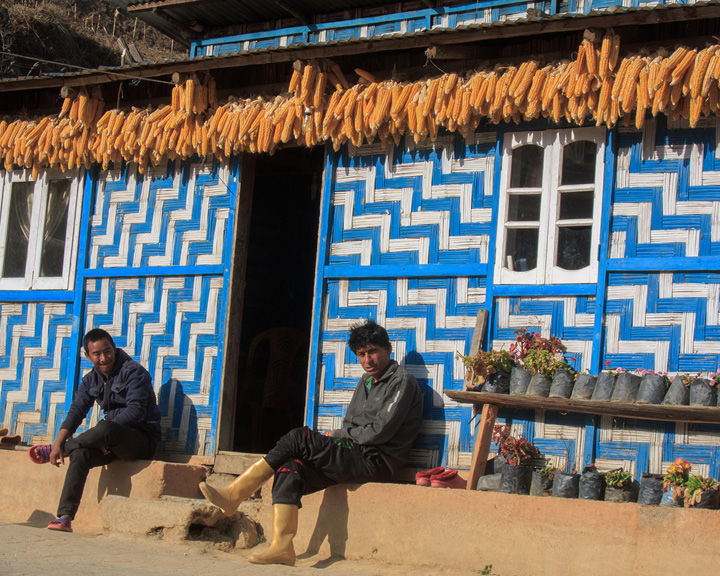
Getting There
The nearest airport to Manebhanjan is at Bagdogra (83 km), which has daily connecting flights to various cities in India. Buses are available from Siliguri (10 kilometres from Bagdogra) to Manebhanjan via Sukhiapokhri. A Land Rover ride from Manebhanjan
to Sandakphu costs INR 5,500/USD 77 plus night halt charges for a round trip (Singalila Land Rover Association; +91 8145822708, +91 9800667075, +91 9647790545).
Stay
There are several accommodation options at Sandakphu, such as Tumsang Chiabari Tea Retreat (starts from INR 10,200/ USD 143; darjeelingchiabari.com) and Birdsong Home (starts from INR 9,000/ USD 126; birdsonghome.com). Decent homestays are available at Chitrey, Meghma, Tumling, and Kalipokhri, while trekkers’ huts and tents offer
accommodation in Tonglu, Phalut, and Gorkhey.
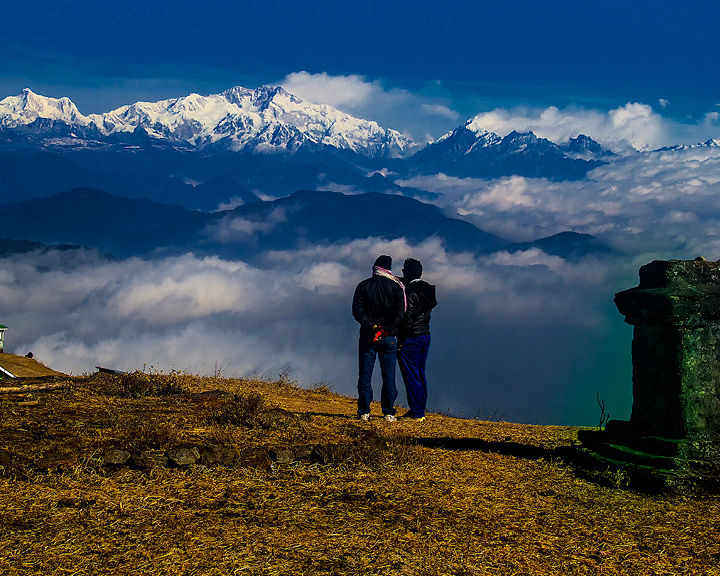
When
April to June is the best time when the place is a riot of colours and the weather is not severe.
Ideal For
Adventure seekers and nature lovers.
Discover
You can continue your trek from Sandakphu to Phalut, which is trickier as the 21-kilometre stretch needs to be completed in one go—there are no pitstops. But this trek reveals a beautiful side of Eastern India.
Related: West Bengal Extends Lockdown Till July 31 And This Is What Travellers Need To Know










